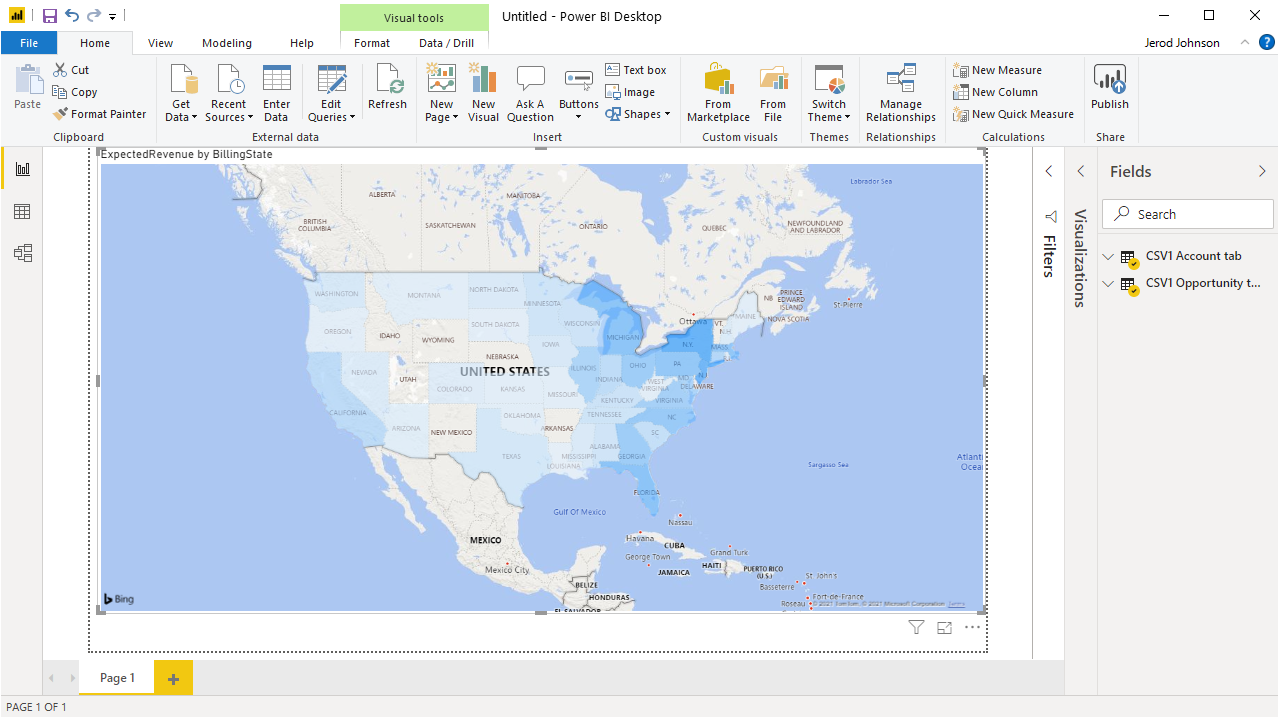Discover how a bimodal integration strategy can address the major data management challenges facing your organization today.
Get the Report →Build Visualizations of Live LDAP Objects in Power BI (through CData Connect)
Use CData Connect to create a virtual database for LDAP objects and build custom reports in Power BI.
Power BI transforms your company's data into rich visuals for you to collect and organize so you can focus on what matters to you. When paired with CData Connect (on-premise or in the cloud), you get access to LDAP objects for visualizations, dashboards, and more. This article shows how to use CData Connect to create a virtual database for LDAP, connect to LDAP objects into Power BI and then create reports on LDAP objects in Power BI.
Create a Virtual SQL Database for LDAP Objects
CData Connect Server uses a straightforward, point-and-click interface to connect to data sources and generate APIs.
- Login to Connect Server and click Connections.
![Adding a connection]()
- Select "LDAP" from Available Data Sources.
-
Enter the necessary authentication properties to connect to LDAP.
To establish a connection, the following properties under the Authentication section must be provided:
- Valid User and Password credentials (e.g., Domain\BobF or cn=Bob F,ou=Employees,dc=Domain).
- Server information, including the IP or host name of the Server, as well as the Port.
BaseDN: This will limit the scope of LDAP searches to the height of the distinguished name provided.
Note: Specifying a narrow BaseDN may greatly increase performance; for example, cn=users,dc=domain will only return results contained within cn=users and its children.
![Configuring a connection (SQL Server is shown).]()
- Click Save Changes
- Click Privileges -> Add and add the new user (or an existing user) with the appropriate permissions.
With the virtual database created, you are ready to connect to and visualize LDAP from Power BI.
Query LDAP Tables
Follow the steps below to build a query to pull LDAP objects into the report:
- Open Power BI Desktop and click Get Data -> Other -> SQL Server and click "Connect"
- Set Server to the address and port of your CData Connect instance (localhost:8033 by default) and set Database to the name of the virtual database you just created (LDAP1)
![Connecting to CData Connect in Power BI]()
- Use "Database" authentication, enter the credentials for a CData Connect user and click "Connect"
![Authenticating with CData Connect]()
- Select tables in the Navigator dialog
![The available tables. (CSV documents are shown)]()
- Click Load to import the data into Power BI
Create LDAP Objects Visualizations
After connecting to the data into Power BI, you can create data visualizations in the Report view by dragging fields from the Fields pane onto the canvas. Select the dimensions and measures you wish to visualize along with the chart type.

Click Refresh to synchronize your report with any changes to the data.
SQL Access to LDAP Objects from Data Applications
With CData Connect you have a direct connection to LDAP objects from Power BI. You can import more data, create new visualizations, build reports, and more — all without replicating LDAP objects.
To get SQL data access to 200+ SaaS, Big Data, and NoSQL sources (including LDAP) directly from your on-premise BI, reporting, ETL and other data applications, visit the CData Connect page and download a free trial.











